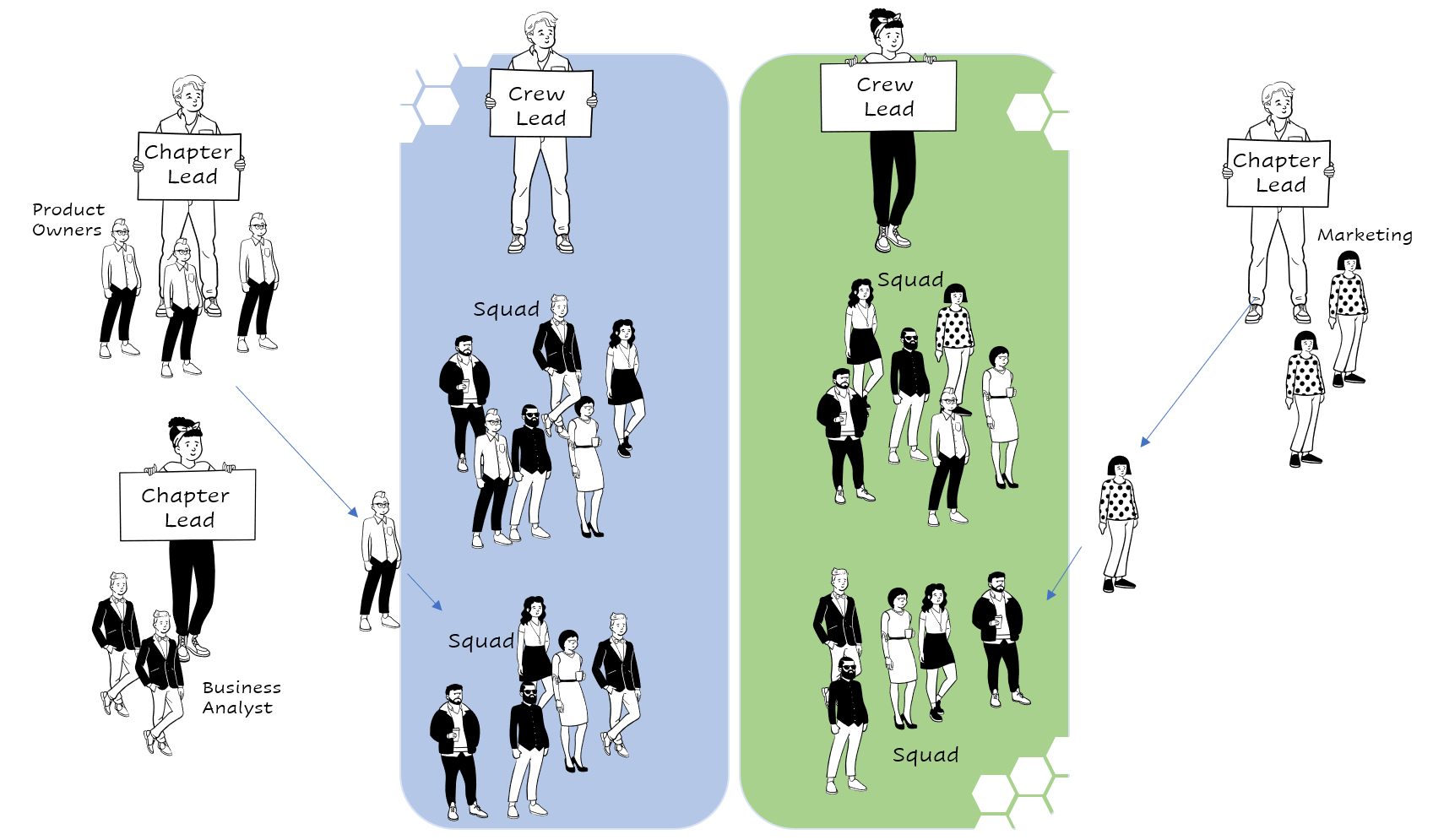What is a Chapter Lead?
The job description of the Chapter Lead is a people leadership role that develops people in their chapter and ensures they are upskilled and best placed within an organisation to deliver customer products, projects or initiatives. They help to remove potential blockers across the business and provide personal and team development for their chapters craft through Servant Leadership, ensuring there is an environment for growth.
To understand where a Chapter Lead sits within an agile organisation lets look at the three traditional roles within an agile team/squad1

These traditionally make up the squad that deliver initiatives or particular tasks. There are multiple websites and information about theses three roles (e.g. Atlassian) but less about the role of the Chapter Lead who manages these roles and helps to set the guidelines mentioned in Paul’s quote. A Chapter lead looks after a chapter of resources that specialise in a particular business craft of skill.
A Chapter Lead is not directly responisble for the task delivered by their chapter members but they are responsible for ensuring that the processes and environment that they deliver in is optimal so they can do it most efficiently. The role is a strategic team leader within the business who’s measurement of success is not the immediate financial success of the product being created (the what) but the longer term success of the team that delivers and constantly improves, which ultimately builds better products (the how).
How is the role different to a traditional manager?
Traditionally, managers are responsible for the end to end performance of their team. From recruitment through to the work delivered, there is a top down waterfall approach where what the manager says goes. While a Chapter Lead recruits and develops their chapter to ensure they are built for success they are not responsible for how their chapter members manage their work, this is down to the squads and crews that they are deployed to.
Traditionally a crew, led by a crew lead will make up a particular business stream within an organisation. e.g. Product, Finance. The Crew Lead determines the work to be carried out by the squads that make up that crew. The squads under the guidance and agreement of their Product Owner then prioritises their work and determine the order that they are going to deliver it.

What is the benefit to the business?
Chapter Leads in conjunction with Crew Leads and Product Owners bring the ability to focus on two key business deliverables rather than combining them. The Crew Lead and Product Owner determine the delivery of the work required (the what) and the Chapter Lead focuses on ensuring that the processes are in place to provide sustainable delivery that also drives improvement (how).
Traditional line managers need to manage both and quite often one is focused on at the expense of the other. (The ‘what’ usually wins)
This seperation ensures additional focus on the ‘how’ by creating a sustainable workforce that drives a culture of development.
What is the benefit to members in your chapter?
A traditional line manager is measured on the work their staff need to deliver as well as their ongoing development. There is a natural conflict between the two because when it comes to focusing time on the persons professional development the managers own targets can mean there is more of a desire to focus on completing more work.
This separation also allows for honest conversations about the work and the squad environment because personal development of the chapter member is with the Chapter Lead, one step removed from the day to day of their squad. By being responsible for improving ‘the how’ there is a focus on career development and learning. This is where the success of the role lies. Concepts like People Development Days (see culture page) help to strengthen this approach and build a culture of continued learning and development which translates in building better products.
1 While different organistaions use different terminology for the benefit of this site I will refer to teams managed by Product Owners as squads and any larger teams that these squads report into as crews.